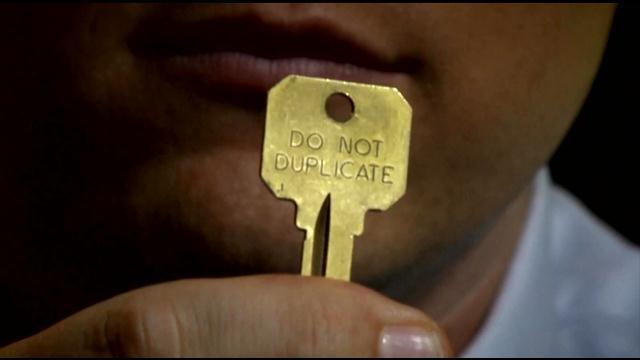Having duplicate content on your website is TERRIBLE for your websites website traffic – because Google HATES duplicate content (with the exception of using rel=canonical to properly attribute that content,) and it can seriously penalize your site if often copy + paste large quantities from other sites. But duplicate content is also terrible for your brand perception – thus, this article will walk you through 5 of the best duplicate content checkers for 2022.
Recently, I was reading a book that I purchased from Amazon. This book had been on my wish list for a couple of months now, so, I was excited to read it.

When I received the book, I quickly tore into it. I read the first chapter in what seemed like five minutes.
When I got to the second chapter I was even more excited because the author was going to be talking about brand positioning. I love brand positioning. I couldn’t wait!
As I read the chapter, I started to realize something suspicious.
The points for brand positioning that this author was listing off were the same as another author that I know of that writes on brand positioning. In fact, the points that the author wrote were exactly the same.
I flipped to the back of the book and thought, “Surely, this author must’ve cited his sources.” I mean, he wouldn’t blatantly rip off someone else’s work, would he?
But when I got to the author’s list of sources, I couldn’t find the citation…
I was kind of bummed that the author of this book I’ve wanted to read plagiarized another author.
I am disappointed in his lack of originality and authenticity and (ironically enough) this revelation hurts my brand perception of this author.
This, however, does not need to be something that your brand falls into.
Now, I’m not saying that you go around plagiarizing content when you write, but with so much content on the internet, one can never be too careful. Especially, when you want to provide the highest quality content for your audience.
That being said, here are my picks for the top duplicate content checkers of 2019 so you can ensure quality content and happy readers.
1. SEMrush
Though you may not think of SEMrush as a plagiarism detector, it certainly can (and will) point out duplicate content on your website.
To do this, you simply run a Site Audit on your website. This can be done by accessing the Site Audit tool in the SEO Toolkit.
Once the audit is complete, you should be able to see all the duplicate content related issues under the “errors” tab.
If there aren’t any, then hooray! Your entire site is duplicate content free. If there is some, then SEMrush will identify which web pages have duplicate content. This will then point you in the right direction, so you can amend the specific web page(s).
2. Siteliner
This site is a remarkable plagiarism scanner and an even greater tool for SEOs. The even more appealing aspect of Siteliner is that it’s free.
One just simply needs to navigate to their website, input the URL of the web page they want to scan into the search bar, and boom! The tool checks for plagiarism.
This site can even help you with drilling down into the pieces of content that have been duplicated. Simply navigate to the “duplicate content” section of the report to see a list of URLs with duplicate content.
Once you click on a URL, you will see all the likely duplicate content highlighted on your web page.
This makes your job so much easier as you can quickly detect if the duplicate content is something you need to amend or ignore.
3. Small SEO Tools
This site is like Siteliner as it allows you to input a URL for free and have the content on that web page crawled.
Small SEO Tools is different, however, because it will do a line-by-line duplicate content check of all your text.
The tool will then pinpoint the exact sentence that it detected plagiarism in. It will also give you the option of running that sentence through a Google search to see what type of content comes up.
Again, this tool is incredibly helpful for SEOs or content writers who want to ensure their content is as fresh as it can be for search engines (and yeah, people too).
4. Grammarly
A tool more popular amongst writers, Grammarly is also helpful for checking content.
Grammarly does have a plagiarism tool but I do want to note that it’s only available for premium subscribers.
The Grammarly plagiarism tool boasts that it scans 16 billion web pages across the internet, highlights the claims within your text that need a citation, and it provides you with the sources you need to corroborate your claim.
That’s a ton of value in such a simple application.
5. Copyleaks
The final plagiarism checker that I want to mention is Copyleaks.
This tool markets itself to education institutions and businesses (many search engine optimization agencies, too).
Though it is a paid tool, Copyleaks does have a free 30-day trail that is just as powerful as its premium counterpart.
This tool can be utilized quickly and efficiently for the university student who is looking to complete her research paper without the fear of it being plagiarized.
Copyleaks also boasts powerful security features and an API. Somethings that the other tools don’t necessarily have.
Conclusion
There you have it! These will be the most used duplicate content checkers for 2022. We’d also love to hear your feedback on how you steer clear of duplicate/plagiarized content.
Also, if you’re looking to learn more about duplicate content from an SEO perspective, be sure to watch our latest video on de-indexing thin and duplicate content.
Keep writing and always be sure to cite your sources!














